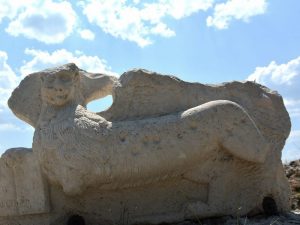Gabela is the most important historical place in the Neretva Valley from Ploče to the sea. The word “gabella” in Italian means customs, which was paid in Driei to various masters in the Middle Ages. She took over the inheritance of the Neretva trade which was once lively in Roman Narona, today’s Vid, which some writers often referred to as Old Gabela in historical documents. Gabela held that trade several centuries later to surrender to Metkovic. For a long time, Gabela was the central authority for this region, and last time between 1694 and 1716, when it was the capital and seat of the Venetian authorities for Neretva.
The story of Troy
Do you know that the ancient Troy is located in the wider area of Herzegovinian Gabela?
The theory is that of a Mexican historian Robert de Salinas Price. This Mexican has raised a huge dust among world historians even 21 years ago when he first came up with the idea that Troy, instead of Asia Minor, is located in Gabela. A few days ago Price, returning to Gabel, again excited the “trojan ghosts”.
Namely, Price has announced its new book, Homer’s Whispers. In that book he expanded his thesis on Gabriel as the ancient Greek state of Troy. In this part Price argues that Troy, as a distinct district, encompassed Herzegovina and part of Dalmatia, and that its capital city was actually Daorson, that is, gradina near Stolac, while as its holy city Ilios states exactly Gabel.
According to this theory, Mythic Troy covered the area from the Cetina River in the east to Dubrovnik in the southwest and north to the Ivan Mountains, that is, the whole of Herzegovina and part of Dalmatia. Also, the then Troy includes the islands of Brac, Hvar, Korcula, Mljet, Lokrum and others, as well as the peninsula of Peljesac. The founders of this theory believe that the island of Brac is an ancient Lesbos. This is argued by the fact that on this Adriatic island today the ratio of five women to one man.
As he told, at the beginning of the book, when the enemy comes from Helispont, on the one hand, Trojans go through the land of Arimoja, and the Arimojians come from the other side, or from Capljina. In this case, the Aryans are in fact Dalmati.




